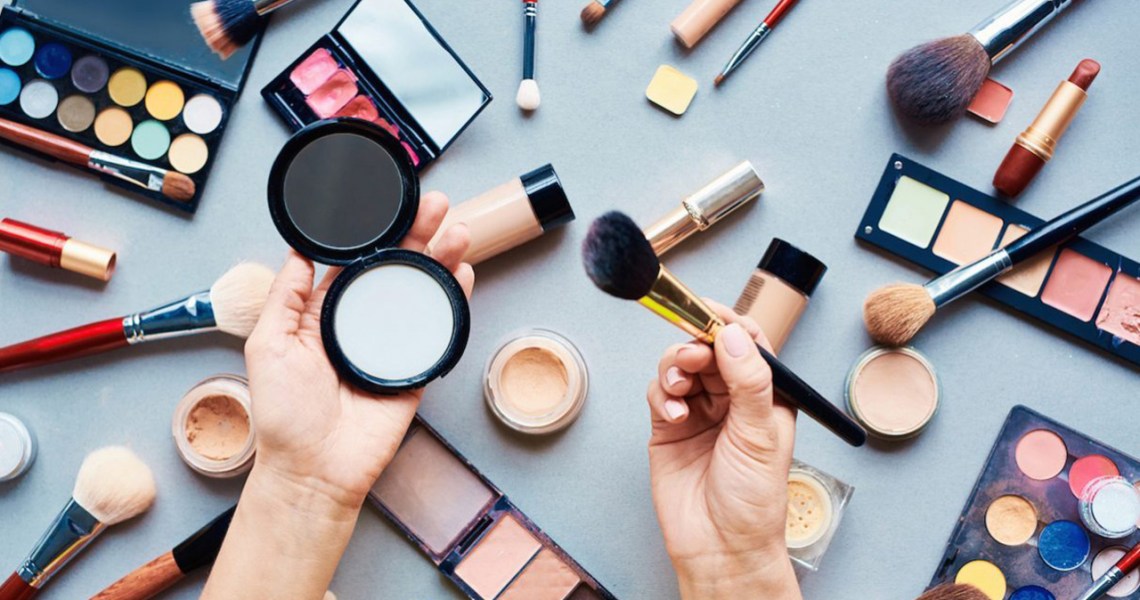This year was a transformational year for the beauty industry. Category shifts in the market played up the importance of inclusivity, the significance of virtual reality and artificial intelligence was validated by the acquisition of Modiface by L’Oréal, and transparency continued to dominate the conversations within indie and clean beauty.
Below, we count down the top five biggest shake-ups of the year, plus recap what each means for the beauty industry.
5. The entrance of male beauty brands
Historically, the personal care products for men have focused on razors, shaving cream or hair loss prevention products, but new attention was brought to men via makeup. Brands including Asos, Calvin Klein, Yves Saint Laurent, Clinique, Marc Jacobs and Chanel now offer either male or unisex makeup lines. Additionally, Dollar Shave Club and Hims extended their traditional hero products to include discretionary items, like fragrance and skin care products.
As the men’s category continues to mature within beauty, included brands are likely to start looking at ways to offer more to their consumers. Calvin Quallis, the founder of men’s skin and personal care brand Scotch Porter, expects the men’s beauty industry to mature in 2019 through personalization.
“Personalization has been a large focus in women’s beauty and personal care over the last year or so, but we will see many more male-focused brands and marketers developing products and messaging that is based on the consumer’s need state,” he said. Quallis also thinks that traditional beauty standards for men will shape-shift: “Brands and marketers will work to reshape the conversation around what manhood is, and work with consumers to reimagine the stereotypical portrayal to be one that can be characterized as more caring and compassionate,” he said.
4. Beauty brands lose respect
Every industry has skeletons in its closet, but within beauty, it takes on a more significant meaning as transparency has been the buzzword of the year.
Deciem, which was founded in 2013 by Brandon Truaxe, became a cult favorite at the launch of its sub-brand, The Ordinary, which offers affordable products (almost all are around $10) with well-researched ingredients. When Truaxe took over the brand’s Instagram page in January 2018, his erratic behavior came on full display. Estée Lauder Companies, which acquired a 28 percent stake in Deciem in June 2017, filed suit against Truaxe and ultimately had him removed from his position as CEO. A judge also issued a restraining order for Truaxe to remain at least 300 meters away from the company’s offices, as well as some Estée Lauder Company employees.
Ad position: web_incontent_pos1
With Sunday Riley, the brand was accused in a Reddit of requiring employees to post fake positive reviews on Sephora.com. The brand later acknowledged in an Instagram comment that it had, indeed, sanctioned this. The brand still sells on Sephora, but the impact on consumer trust is yet to be determined.
3. Influencers shill fake reviews
Several beauty influencers, like makeup artist Kevin James Bennett and YouTuber Pretty Pastel Please, noted in August that they had been offered thousands of dollars ($75,000 to $85,000, in Bennett’s case) by brands to post negative reviews of their competition. This erupted in an online scandal that highlighted the fact that the influencer market is still largely a place with no uniform system of operations for who gets paid, and for what. (There is still very little regulation by the Federal Trade Commission.)
“For influencers, it’s extremely important that they maintain trust with their audiences, and in today’s consumer economy, brands need to do the same,” said Kamiu Lee, founder and CEO of influencer marketing group Activate.
2. L’Oréal Group acquires ModiFace
When L’Oréal Group acquired Modiface in March, it signaled the importance of augmented reality, as well as technology itself, in beauty. The relevance of AR to customers goes beyond an entertaining experience, according to Maya Mikhailov, chief marketing officer and co-founder of mobile commerce platform GPShopper.
“[AR] is empowering consumers to use these tools and see these beauty or hair looks and say, ‘Okay, I am willing to try this,’” she said. “You see more money being put into these digital products. It must be making money, because L’Oréal went out and bought [ModiFace], and you don’t buy something without knowing that it [could be] a huge and important part of your business.”
Ad position: web_incontent_pos2
1. The Fenty effect
Fenty Beauty, the Rihanna-founded beauty brand, made a splash in fall 2017 when it launched its foundation with 40 shades, but the actual Fenty effect was not felt until 2018 when other beauty brands rushed to be part of the inclusive conversation. Linda Wells, creative director at Revlon, launched Flesh in June; Dior launched a new 40-shade foundation in May, as did CoverGirl with its TruBlend Matte Made Foundation in 40 shades; and CoverFX (which already offered several 40-shade foundations) launched another formula called Power Play in 40 shades in March.
“In a post-Fenty society, three foundation shades don’t cut it anymore, and legacy and new brands alike have elevated their offerings to meet the 40-shade minimum,” said Anagha Hanumante, a beauty analyst at CB Insights.
In fact, any brand that does not offer as many foundations, such as Tarte when it launched only 15 shades of Shape Tape in January, can face backlash. As part of the new beauty order, inclusivity is key.




